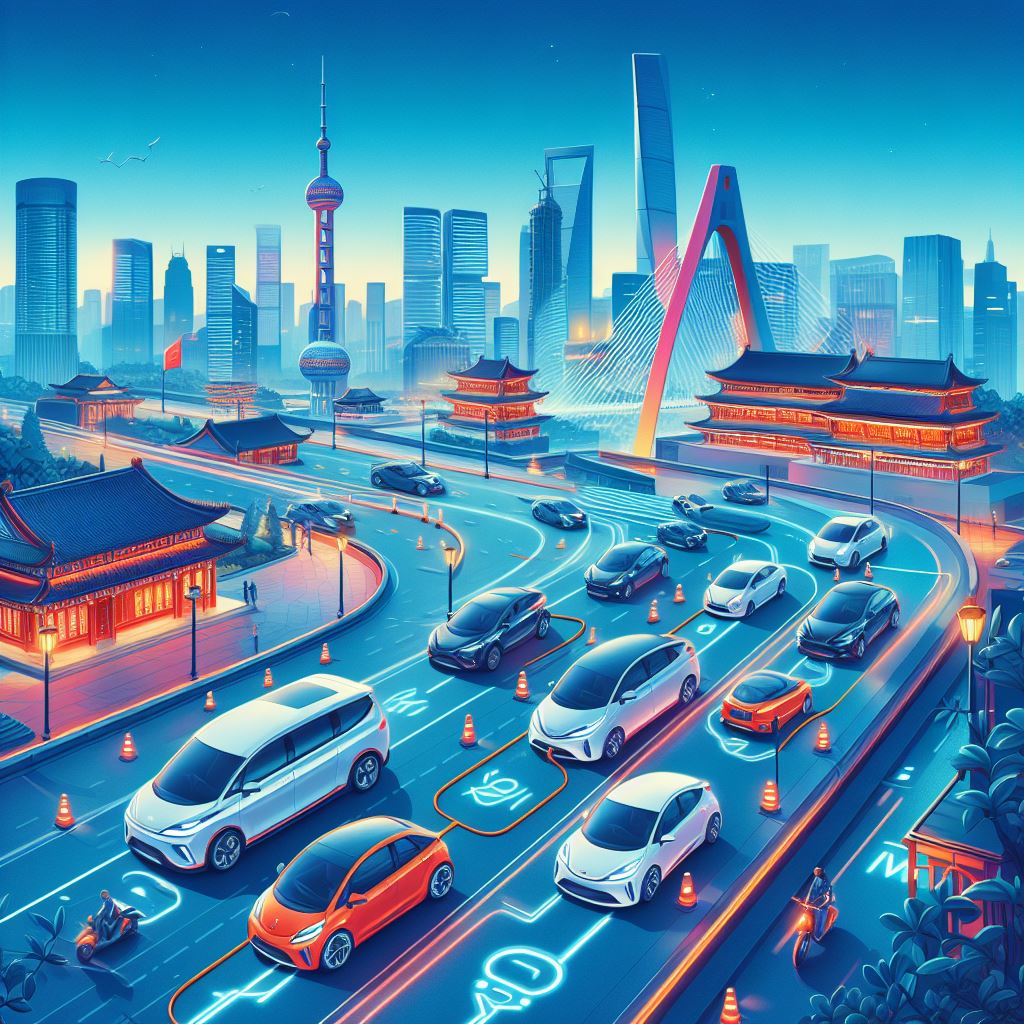China is the world’s largest car market, with over 25 million vehicles sold in 2020. However, the country is also facing serious challenges such as air pollution, oil dependence, and greenhouse gas emissions. To address these issues, the Chinese government has been promoting the adoption of electric vehicles (EVs) through various policies and incentives.
In this article, we will compare the best-selling car brands in China, divided into classic and electric cars, and examine how China is betting on electromobility, whether it is gaining ground in the country, and what kind of support the government is providing.

Classic car brands
According to the China Passenger Car Association (CPCA), the top five best-selling classic car brands in China in 2020 were Volkswagen, Toyota, Honda, Geely, and Buick. These brands accounted for about 40% of the total car sales in the country. Among them, Volkswagen was the most popular, with over 3.7 million vehicles sold, followed by Toyota with 1.8 million, and Honda with 1.6 million. Geely and Buick each sold about 1.3 million vehicles.
Some of the factors that contributed to the success of these brands include:
- Brand reputation and loyalty: Volkswagen, Toyota, and Honda have established a strong reputation and customer base in China, thanks to their long history, high quality, and reliability. Geely and Buick have also built a loyal following among Chinese consumers, especially in the mid-range and premium segments.
- Product diversity and innovation: These brands offer a wide range of models and segments, catering to different customer preferences and needs. They also invest heavily in research and development, introducing new features and technologies to enhance their products’ performance, safety, and comfort.
- Market adaptation and localization: These brands have adapted to the changing market conditions and consumer demands in China, launching new models and variants that suit the local tastes and regulations. They have also localized their production, supply chain, and distribution networks, reducing costs and increasing efficiency.
Electric car brands
According to the CPCA, the top five best-selling electric car brands in China in 2020 were BYD, Tesla, SAIC, NIO, and Li Auto. These brands accounted for about 60% of the total EV sales in the country. Among them, BYD was the leader, with over 189,000 vehicles sold, followed by Tesla with 137,000, and SAIC with 127,000. NIO and Li Auto each sold about 43,000 vehicles.
Some of the factors that contributed to the success of these brands include:
- Government support and incentives: The Chinese government has been supporting the development and deployment of EVs through various policies and measures, such as subsidies, tax exemptions, purchase quotas, emission standards, and charging infrastructure. These policies have reduced the price gap and increased the attractiveness of EVs for consumers and manufacturers.
- Technology leadership and differentiation: These brands have been at the forefront of EV technology, offering high-performance, long-range, and smart vehicles that can compete with or surpass their conventional counterparts. They have also differentiated themselves from the competition by providing unique features and services, such as battery swapping, autonomous driving, and online platforms.
- Customer experience and satisfaction: These brands have focused on enhancing the customer experience and satisfaction, by providing high-quality products, personalized services, and innovative solutions. They have also cultivated a strong brand image and community, creating a sense of identity and belonging among their customers.
Electromobility in China
Electromobility refers to the use of electric power for transportation, such as EVs, electric buses, electric bikes, and electric trains. Electromobility has many potential benefits for the environment, the economy, and the society, such as reducing air pollution, greenhouse gas emissions, oil consumption, and noise, as well as improving energy efficiency, security, and diversity.
China is one of the most active and ambitious countries in promoting electromobility, aiming to become a global leader in the field. According to the IEA, China had over 4.5 million EVs on the road in 2020, accounting for about 45% of the global stock. The country also had the largest number of publicly accessible chargers, with over 1.2 million units. The Chinese government has set a target of having EVs make up 40% of all car sales by 2030.
To achieve this goal, the Chinese government has been implementing a comprehensive and coordinated strategy, involving various policies and measures, such as:
- Fiscal incentives: The government has provided generous subsidies and tax exemptions for EV purchases, ranging from 10,000 to 60,000 yuan ($1,500 to $9,000) per vehicle, depending on the type, range, and performance of the EV. The subsidies have been gradually phased out since 2019, and were completely removed at the end of 2020, to encourage market competition and innovation.
- Regulatory mandates: The government has imposed a mandatory quota system for EV sales, requiring car manufacturers to earn a certain number of points, based on the number and type of EVs they produce and sell, or face financial penalties. The quota system started in 2019, with a requirement of 10% of total sales, and will increase to 12% in 2020, 14% in 2021, and 18% in 2023.
- Emission standards: The government has tightened the fuel economy and tailpipe CO2 standards for conventional vehicles, making them more stringent than those in the United States and comparable to those in the European Union. The standards aim to reduce the average fuel consumption of new cars from 6.9 liters per 100 kilometers in 2015 to 4 liters in 2025, and the average CO2 emissions from 200 grams per kilometer in 2015 to 117 grams in 2025.
- Infrastructure development: The government has invested heavily in building and expanding the charging infrastructure for EVs, both public and private, covering urban and rural areas, highways and residential communities, and various service facilities. The government has also supported the development of battery swapping stations, especially for electric buses and taxis, to reduce the charging time and extend the range of EVs.
- Innovation support: The government has funded and facilitated the research and development of EV technology, especially in the fields of batteries, motors, and power electronics, to improve the performance, cost, and safety of EVs. The government has also encouraged the collaboration and integration of various stakeholders, such as car manufacturers, battery suppliers, charging operators, and service providers, to create a competitive and innovative EV ecosystem.
Conclusion
China is undergoing a major transition in its car market, from classic to electric vehicles, driven by a combination of environmental, economic, and strategic factors. The best-selling car brands in China reflect the diversity and dynamism of the market, as well as the challenges and opportunities for the industry.
The Chinese government is playing a key role in supporting and shaping the electromobility sector, through a comprehensive and coordinated strategy, involving various policies and measures. The transition to electromobility will bring many benefits to China and the world, but also entail substantial costs and risks.
Therefore, it is important to monitor and evaluate the impacts and outcomes of the transition, and to adjust and optimize the policies and measures accordingly.






